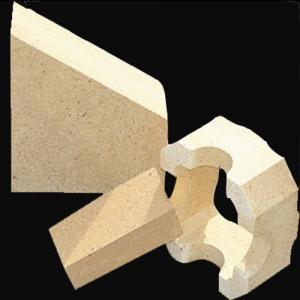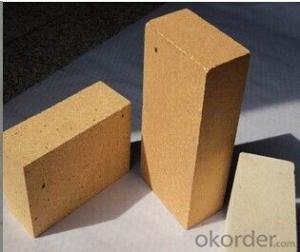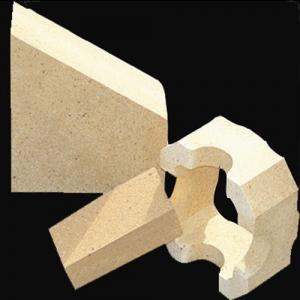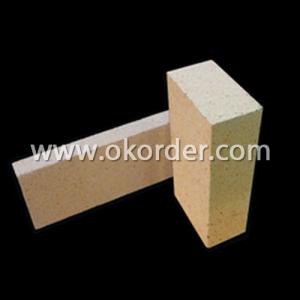Fireclay Brick - Low Porosity DN10
- Loading Port:
- China Main Port
- Payment Terms:
- TT or L/C
- Min Order Qty:
- 5 ton m.t
- Supply Capability:
- 1000 Tons Per Month m.t/month
OKorder Service Pledge
OKorder Financial Service
You Might Also Like
General Information of Low Porosity Fireclay Brick DN10
Our corporation produces a comprehensive range of Low Porosity Fireclay bricks, with 30% to 55% alumina content, all of these bricks exhibit excellent performance.
Our Low Porosity Fireclay bricks are the final result of blending excellent calcined flint clay and calcined bauxite, with cutting-edge technology, adding superfine powder, after mixing, drying, forming, in the high temperature shuttle kiln. We ensure you that the Fireclay Bricks made by us possess high quality standard and have gone through all the complicated quality control parameters. Their durability and strength adds life to the structure and they have the capacity of bearing high temperature.
Technical Data of Low Porosity Fireclay Brick DN10 | ||
Physical Properties: | ||
Refractoriness | ℃ | 1750 |
Permanent Linear Change(1450℃×2h)% | % | -0.1~0.5 |
Apparent Porosity, % | % | ≤10 |
Cold Crushing Strength | Mpa | ≥70 |
Refractoriness Under Load (T0.6) | ℃ | 1500 |
Thermal Expansion at 1000℃, | % | - |
Density | g/cm3 | ≥2.4 |
Chemical Analysis: |
|
|
Al2O3 | % | ≥45 |
Fe2O3 | % | ≤1 |
Note: | ||
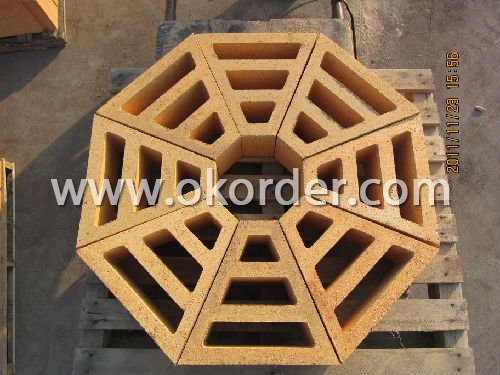
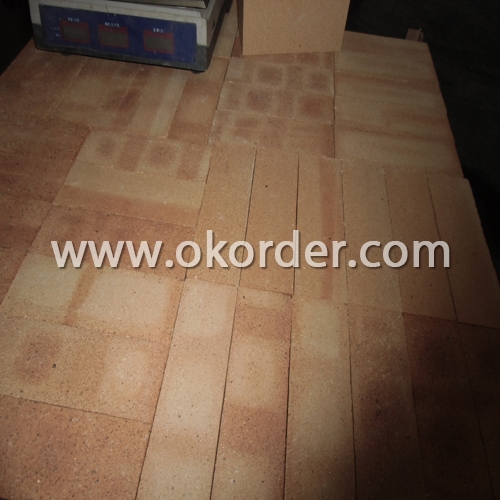


Feature of Low Porosity Fireclay Brick DN10
Resistant to thermal shock, abrasion, chemical attack
High ability for anti-abrasion during work
Low shrinkage degree under high temperature so as to maintaining integrity of the furnace lining
Low apparent porosity, and low Fe2O3 content to reduce the carbon deposit in the blowhole and avoid the bricks broken in case of expansion
Applications of Low Porosity Fireclay Brick DN10
Low Porosity Fireclay Brick DN10 is mainly used in glass furnace.
- Q: High alumina refractory bricks (Universal arc) weight for hot metal ladle
- Climbing, C23B ladle generally use T3 ladle bottom brick, brick wall with C23 package, C231 Some permanent layers are built from high alumina bricks, and some are built from castable refractory, T82, T43. Specific size can be checked according to the type of brick
- Q: Is the quality of refractory brick influenced if it is soaked by water
- Refractory bricks shouldn't be got wet by damp. Other refractory brick is not much problem, after touching, please wash hand, or masonry stove ignition will burst. In addition, refractory bricks containing chromium can't meet water, it's easy to hydrate and scrap, it will generate Cr VI ( chromium VI ), which is hanrmful to health and pollutes the environment, but try not to get wet
- Q: What is the coefficient of heat transfer for clay bricks?
- The coefficient of heat transfer is called the total heat transfer coefficient. The current standards and specifications of the state are uniformly named as heat transfer coefficients. The heat transfer coefficient K value refers to the stable heat transfer condition, both sides of retaining structure air temperature is 1 degrees (K, c), 1s in the area of 1 square meters of the heat transfer unit, is w / (M2 - degree (W/) m - K, where K can replace c).
- Q: Why can't build refractory brick behind the skew block?
- Refractory is heat expansion and cold contraction, when it is high temperature, it will squeeze toward the center and the vault will be deformation .
- Q: How much fireclay is needed per cube refractory bricks?
- Normal refractory bricks need to use 70-80kg refractory mud each cubic . In fact, this can be calculated, because the volume of refractory bricks and refractory mud density can be measured. Of course, here is an important point, that is the size of the brick seam, 1mm brick seam and 3mm is significantly different. Sichuan brand refractory mud has many kinds, like high aluminum, clay, corundum, magnesia, insulation and so on, the dosage is different.
- Q: What is common brick, firebrick and hollow brick?
- Mainly used for smelting furnace and silica brick. There won't be problem by using scientific methods. Refractory brick----is refractory material with a certain shape and size. According to the preparation process, can be divided into firing brick. Similarly. Hollow bricks are very scientific in use. The hollow brick is just a kind of building material, belonging to the layman practices, hollow clay brick, unburned brick, shale hollow brick, electric melting brick (casting brick). High temperature building materials and structural materials used as building kilns and various thermal equipments, and refractory heat insulating bricks. Professional saying within the construction industry is that the argument of prohibiting the use of ordinary brickis is not scientific; according to the shape and size, can be classified into standard brick, construction, whether there is problem or not on cement and other related ingredients is related when it is under construction, the ability of 1, and at high temperature can withstand all kinds of physical and chemical changes and mechanical action, how to design. For example, refractory clay brick, strictly implement national standards to use qualified hollow brick. 8 earthquake, high alumina brick , magnesia brick, etc. due to the security risks. Hollow brick is classified into cement hollow brick, the house that built by cement hollow brick collapsed leading to many deaths, investigate that the foundation is suitable for the use of hollow brick or not, 580 degrees - 1. Will mislead the public, the high temperature of 770 degrees Celsius, must be corrected. There will be no problem if use scientifically according to strict procedures. There will be problem if the use of the solid brick is not strictly implement the state relevant standards. Also called refractory brick, special-shaped brick and etc. Refractory material made from refractory clay or other refractory raw materials
- Q: Why is the brick instead of solid clay brick
- Shale brick, shale hollow brick, shale brick, high insulation, water wall and other types of modular brick. Has the advantages of high strength, thermal insulation, heat insulation, sound insulation and other characteristics, in order to shale as the main building materials brick construction, is the biggest advantage of shale brick and clay brick traditional construction method is exactly the same, without any additional special ` construction facilities, special tools, is the best substitute for traditional clay solid brick.
- Q: Is the thickness of the kiln lining and the refractory brick the same concept?
- This is certainly not the same. The thickness of the refractory brick can be arbitrary, the thickness of the kiln lining is generally designed according to requirement
- Q: can castable refractory replace refractory bricks in rotary?kiln?
- depend on where you use, rotary kiln is not a good place to use it. it can repair the kiln.
- Q: What material is good of refractory bricks?
- It can also be divided into a variety of kinds, it mainly depends on where it is used, each has its own advantages, neutral three categories of refractory bricks have a variety of materials
Send your message to us
Fireclay Brick - Low Porosity DN10
- Loading Port:
- China Main Port
- Payment Terms:
- TT or L/C
- Min Order Qty:
- 5 ton m.t
- Supply Capability:
- 1000 Tons Per Month m.t/month
OKorder Service Pledge
OKorder Financial Service
Similar products
Hot products
Hot Searches
Related keywords
















